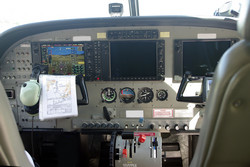Avionics technology in space applications
AFDX is a data network that implements the electrical and protocol specifications IEEE 802.3 and ARINC-664 for the exchange of data between avionics subsystems. One of the reasons that AFDX has become such an attractive technology is because it is based on Ethernet, a mature technology that has been continuously improved ever since its inception in the 1970s. In particular, ARINC specification 664 part 7 is one thousand times faster than its predecessor. Applying the concepts of AFDX to spacecraft data networks is, therefore, expected to provide multiple benefits. This was the aim of the EU-funded project MISSION(opens in new window) (Methodology and assessment for the applicability of ARINC-664 (AFDX) in satellite/spacecraft on-board communication networks). The first step was to tailor the AFDX standard to the conditions in space. To achieve high reliability for space-borne equipment, redundant components and sometimes units are arranged in hot or cold mode. In cold redundancy, one part is operational, and the redundant one is not powered. In hot redundancy, both parts are powered, having an impact on configuration and bandwidth. The MISSION researchers addressed redundancy of equipment with communication ports and appropriate data structure. They went on to define the data network topology for an existing space mission and another mission under development. The demonstrators developed were composed of measuring instruments and equipment to record data from the payload. Ethernet in space could be a major step. Realising the first AFDX data network above SpaceWire– the standard currently used onboard spacecraft – could promote the MISSION solution for a future implementation. Demonstrators confirmed the feasibility of AFDX over SpaceWire, and the results were used to compile guidelines for space agencies and prime contractors. The MISSION project has laid the groundwork for the development of operational prototypes for specific equipment, including switches and end systems. The solutions suggested should enable the development of standardised and configurable systems with a high impact on the European industry.







